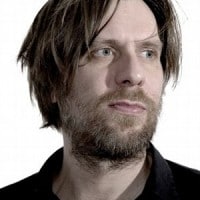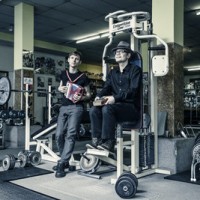
In the years since 2000 Austrian electronic musicians were not as omnipresent as in the previous decade. However there were still a lot of exciting approaches and developments. A brief overview by Sebastian Fasthuber.
You could probably write a whole book about the Austrian electronic music scene since 2000. However, summarizing this in a few paragraphs seems to be impossible. Or is it? The longer you think about what happened in terms of sounds and scenes, after the “Vienna Sound”-hype of 1996/97 and the following few years of its significant impact finally died away, it becomes all the more appealing to list a few points and keywords and write down some names that were formative and/or new in the millennium years. Without any claim to completeness.

The new millennium continued with the exact same protagonists. The first half of the decade brought a few new players, but was largely dominated by those artists who had already gained some prominence and consequently simply formulated their approaches more accurately. In this sense, the electronic sounding trio Radian, which initially came from the Viennese experimental scene around the venue Rhiz and had a pop band cast of guitar, bass and drums, managed to advance to a highly acclaimed act with an almost academic appeal and thoroughly concepted album on the U.S. label Thrill Jockey.

While these people were consistently tweaking on their approaches and releasing album after album, the past decade 
From then on Pulsinger primarily emerged as a producer of other artists and took on the mastering of a variety of records in his Feedback studio in Vienna’s 5th district. It wasn’t until the end of the decade that he began to release his own music more regularly again and completed the series “Dogmatic Sequences” that he started in the early 90s and also finally released his long-awaited artist album “Impassive Skies” (2010).

What Wolfgang Schlögl rather referred to was that the profession of an electronic musician had gradually changed in the last decade: “A new generation of theater and film people appeared on the scene with new demands on the music. These are people who are as old as I am, sometimes even younger. Musicians like me, who had never been asked before and never seen in these fields, were suddenly given commissions in these areas. A completely new and exciting work area opened.” For many players in the electronic music field, this proved to be – of course also financially – a rewarding task, but also had the effect that less time was available to work on their own music, and thereby releases were sometimes sparse.

The gap that K&D left was for a while taken by D&K, Dzihan & Kamien. With an equally slick as musical top-notch blend of downtempo, jazz and electronics, Vienna-based Vlado Dzihan and Mario Kamien easily played off all K&D copycats of the “Vienna Groove” fraction, who were cavorting around 2000 on various labels and compilations. Especially with their first two albums “Freaks & Icons” and “Gran Riserva” (2000 and 2002), they were also highly successful on an international level.

Over the years Klaus Waldeck, who was initially established by the media as an opponent of Kruder & Dorfmeister, moved away from his trip-hop soundscapes. As the duo Saint Privat with singer Valerie he mixed easy listening with bossa nova and references from French film music. Later, he again worked solo and proved himself as a pioneer of the genre electro swing with the “Ballroom Stories” album, on which he reactivated the 20s and 30s swing and jazz as modern pop music.

In terms of music production, the noughties brought a not to be underestimated development. Having already talked about the liberalization of the means of production in the 90s, since 2000 it was basically no longer necessary for a musician to be in a studio. Everything could be done with one device. The laptop became, together with the necessary software, the studio in the smallest spaces. Patrick Pulsinger sees a connection between this change and the fact that more women appeared on the scene as producers in the new millennium: “From that time they no longer had to go to a music store and be unpleasantly approached by a guy. They could just sit down at the computer and try to make music with a few programs. To be honest, the development of female producers is extremely new. This has only been the case for the past 15 years. ”

Joining the scene a little later was Anja Plaschg aka Soap & Skin, the world’s alternative-pop star on her own initiative, skills, and with a strong connection to electronic music . Her self-produced debut album “Lovetune for Vacuum” (2009) – often forgotten that this is the work of a teenager – impressed with ingenious songs and intense arrangements between piano sounds and orchestral electronic rhythm loops. With her second album “Narrow” (2012), she continued her path as Soap & Skin and even reached the top of the Austrian charts.
Other female producers and musicians who were always worth listening to: Maja Osojnik, who is highly active between avant-garde, improvisation and noise, the minimal techno producer Clara Moto, or Shroombab,who has been waving the drum’n’bass flag over the years, the Brazilian Joyce Muniz, who glides with her own releases between house and techno, or the singer Nomadee, who emerged with a pleasant independent hip-hop/R’n’B approach. With Comfort Zone, Christina “Chra” Nemec founded a queer-feminist electronic label, which releases acts such as Crazy Bitch in a Cave or Cherry Sunkist. And of course Electric Indigo’s platform Female Pressure, which is still an important focal point for female musicians.
New in the noughties was also that the genre boundaries became more open. In the 90s an artist like Gustav would have hardly been categorized as an electronic musician, since vocals and lyrics play a central role in her music. In the new millennium, however, many things began to mix. People who were strictly electronic in the previous decade, rediscovered their pop-socialization of the 80s and were motivated to head in the direction of songs or to pick up a guitar. In this period, the known electronic musician Bernhard Fleischmann began to reinforce traditional instruments and eventually even sang on his last two albums.

Quite pop-affine is also Wolfram Eckert, who began as DJ Marflow and now simply goes by his first name. His first album “Wolfram” shows him as a savvy and witty player between electro-pop, Italo disco and Euro dance. The Carinthian in Vienna, who is well recognized as an international DJ, was one of the first fresh faces in the new millennium.
An increasing number of young producers appeared in the second half of the decade. The Vienna producer and keyboardist Dorian Concept, managed to build an international career with fierce tracks, filled to the brim with information somewhere between hip-hop deconstruction, feverish computer sounds and jazz bonds. His recent productions have been released on the British label Ninja Tune, but originally Dorian Concept comes from the camp of the label Affine Records, which is, in addition to the more preferred straight beats of the crowd-pullers Ogris Debris, fearless future-funk and bass music researchers such as The Clonious , JSBL and Cid Rim, home of an amazing number of promising acts.

Recent years have not only been about dancing. A lot of club sounds emerged, new labels were founded. Besides Affine Records, the Praterei Records should also be mentioned, where the twins Daniel and Fabian Schreiber are at home with their new project The New Tower Generation, as well as the label Luv Shack Records (Lee Stevens, Simon LeBon and others) or the more technoid Schönbrunner Perlen with acts such as Ken Hayakawa. House producer Roman Rauch releases his tracks with acclaimed international names such as Endless Flight or Philpot. The latter label also released the Reboot Joy Confession‘s tracks, ranging from broken beat to deep house. Ferociously rocking the dancefloors is the band Gudrun von Laxenburg.

The potential of electronic music from Austria is huge. Many artists of the younger generation have exposed a lot of talent samples, but have certainly not exhausted all of their skills. Whether or not the artist album as a big statement is the measure of all things, remains to be seen. Wolfgang Schlögl was recently concerned with how fragmented music is perceived today. As a response, his next solo album, which will appear in May 2013, will be a double album. Patrick Pulsinger sees the changes in music reception less dramatic: “People have always consumed music in the way they wanted to. Today more and more are making their own program”. If you take that last sentence as an omen, then the electronic music from Austria will sound even more colorful and diverse in the future. The fact that no one wants to wear the “Vienna Sound” hat any longer has not been amiss.
Cover Photo © Dominik Vsetecka
Photo Kruder & Dorfmeister © G-stone
Photo Christian Fennesz © Maria Ziegelboeck
Photo Patrick Pulsinger © Elsa Okazaki
Photo Sofa Surfers © Bernd Preiml
Photo Tosca © Markus Rossle
Photo Rodney Hunter © Oliver Jiszda
Photo Parov Stelar © Etage Noir
Photo Gustav © Thomas Degen
Photo Bunny Lake © Bunny Lake
Photo Ogris Debris © Andreas Waldschuetz
Photo Elektro Guzzi © Klaus Pichler
Photo Ritornell © Andreas Waldschütz & Adia Trischler
